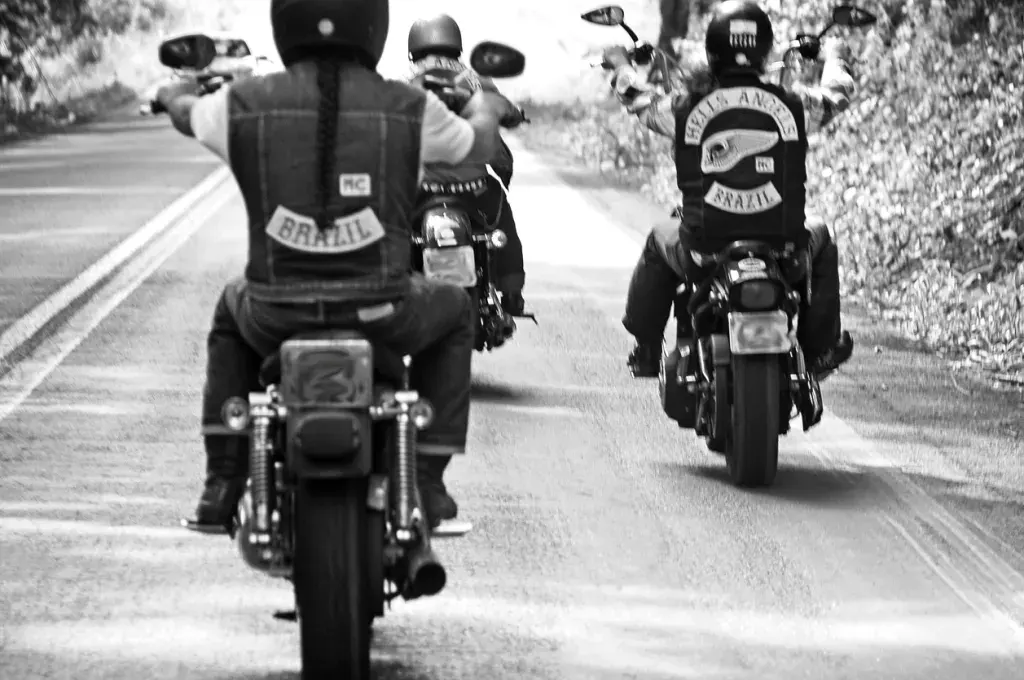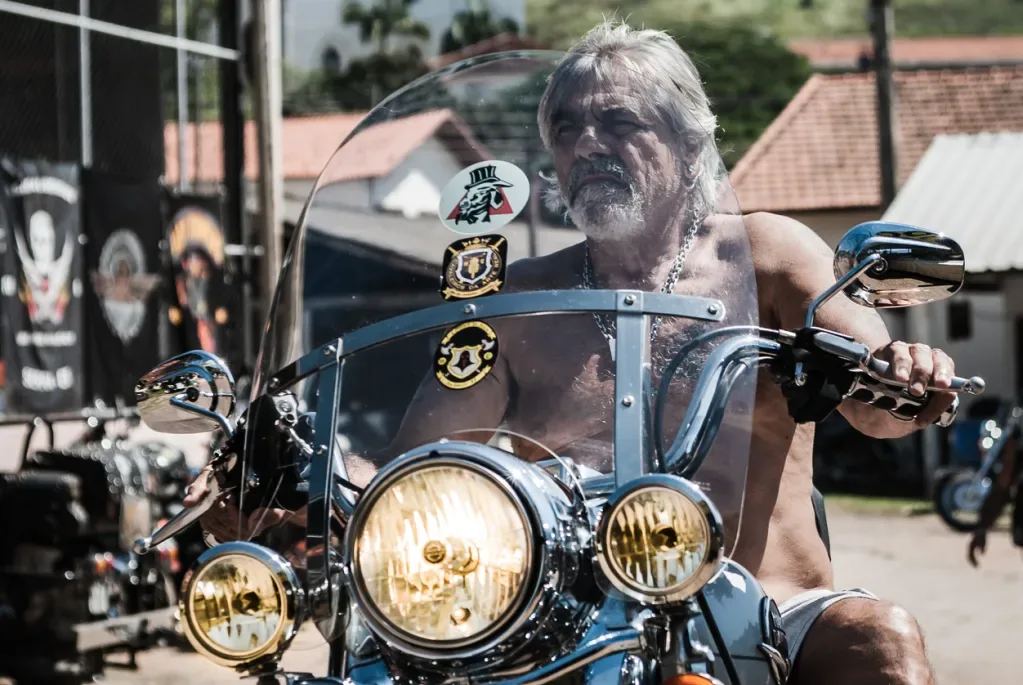The 1% biker patch is one of the most recognizable symbols in the motorcycle community. It’s one of the many emblems you’ll see on vests, jackets, and other gear.
However, there’s debate about who can and can’t wear the badge. This controversial insignia has a special meaning that you shouldn’t take lightly unless you’re looking for trouble.
Today, we’re looking into motorcycle clubs to discover what a 1% patch means and who’s allowed to rock one.
Let’s ride!
When Did Bikers Start Wearing Patches?
The tradition of bikers wearing patches dates back to the 1920s. This was when the American Motorcyclist Association (AMA) formed and began organizing events. Attendees would sew the name of their club onto vests and jackets for all to see.
Over time, the use of these symbols grew to pay respect, commemorate rides or rallies, and represent achievements.
Sadly, until the 1950s, membership in AMA clubs was restricted to Whites only. Any groups accepting non-Whites were considered outlaws. Thankfully, the group changed its policy and began allowing African-Americans to join. However, it took several decades to see any noticeable diversity.
What is a 1% Biker Patch?
The 1% patch is a specific biker symbol worn on a jacket or vest. It’s typically a small rectangular or circular image with “1%” or “1%er.” It shows the wearer’s loyalty to an outlaw motorcycle club and rejection of the AMA.
This is a significant cultural and historical symbol within the outlaw biker subculture. Before you go dawning it or putting it on your vest, you better understand it.
As you’ll see, it’s not something you want to take lightly.

When Did the 1% Biker Term Originate?
A 1% biker club operates outside mainstream society and the law. These outlaw motorcycle groups have strict rules and codes of conduct. They began appearing in the late 1940s after the conclusion of World War II. Upon their return, many servicemen had trouble adjusting to everyday life and found comfort in biker communities.
Some of the most popular and oldest 1% clubs are the Hells Angels, Outlaws, Pagans, and Bandidos motorcycle clubs. These nationwide organizations often have chapters and charters for specific areas.
It’s common for the media to paint these groups in a negative light. They emphasize violent crimes that generally only occur between clubs and rarely involve bystanders.
Are All 1% Bikers Criminals?
The term 1% biker emerged after a supposed riot broke out in Hollister, California, in 1947. After several days of intense beer drinking and street racing, the California Highway Patrol came to regain control. They tossed tear gas and tried to shut down the event.
There were approximately 55 individuals arrested during the fiasco. There was no property damage or looting that took place throughout the unrest. Sadly, that wasn’t the story the local media portrayed.
The San Francisco Chronicle ran a catchy headline with a staged photo, making the situation appear worse than it was. Unfortunately, Life Magazine picked up the story. This led to the AMA releasing a statement trying to clean up its reputation.
One statement said that 99% of its members were law-abiding citizens, and the remaining 1% were outlaws. Those who proudly embraced the outlaw lifestyle grabbed hold of the 1% title and started organizing.

Can Women Wear a 1% Biker Patch?
Traditionally, women can’t wear a 1% patch. However, this rule has some exceptions. Women may sport the badge if they’re “property” or “old ladies” of members. This means they’re in a committed relationship with a member and respected by the others.
It’s worth noting that not all clubs allow women to wear the patch. Even if they do, female members may still face prejudice or unequal treatment within the group.
Can Anyone Wear an Outlaw Biker Patch?
Technically, anyone can wear an outlaw patch. However, it’s important to understand the potential effects of doing so. Outlaw motorcycle clubs view their symbols as sacred and consider them symbols of their brotherhood and loyalty to the group. Wearing one without being a member can be seen as disrespectful and may result in negative outcomes.
Wearing a symbol that implies membership without being part of the club is known as “posing” or “being a poser.” Clubs generally frown upon this behavior, and such instances have resulted in harassment, physical violence, and even legal consequences.
So while anyone technically can wear it, it’s generally not advisable. Ensure you’re a member or have direct permission to wear the patch before flaunting one.
Don’t Rock That 1% Patch Unless You’re A Biker
As you can see, bikers take the 1% patch very seriously. Make sure you aren’t acting disrespectfully towards a club or its members. If you are, you better be ready to back it up. Some may have little tolerance when it comes to posers.
You could quickly find yourself over your head, especially if a biker is having a bad day.
If you have any doubts about sporting one of these symbols, it’s best to skip it and avoid any unwanted brawls.

We’ll Help You Find the Best Free Camping in the USA
You should give it a try!
As a matter of fact, these free campsites are yours to enjoy. Every time you pay federal taxes, you’re contributing to these lands.
Become a FREE CAMPING INSIDER and join the 100,000 campers who love to score the best site!
We’ll send you the 50 Best Free Campsites in the USA (one per state). Access the list by submitting your email below: